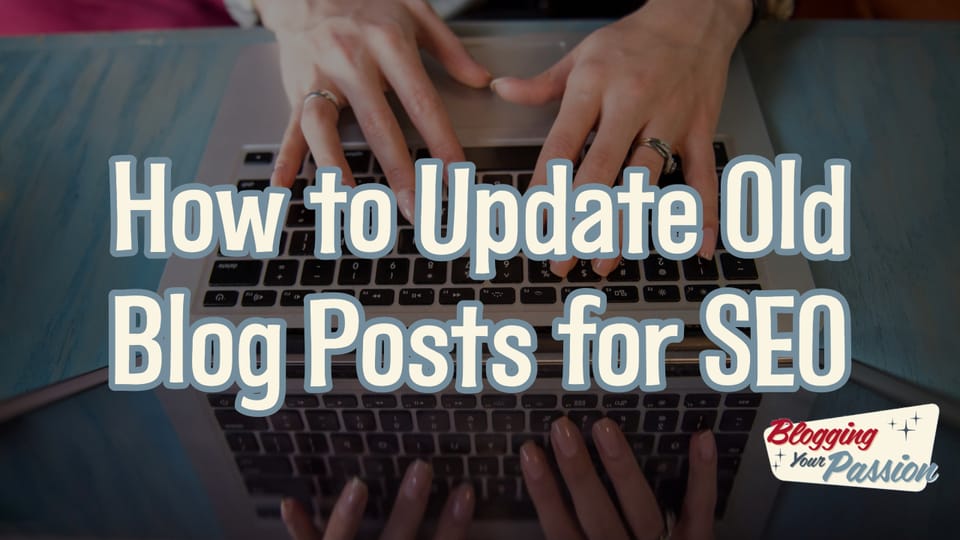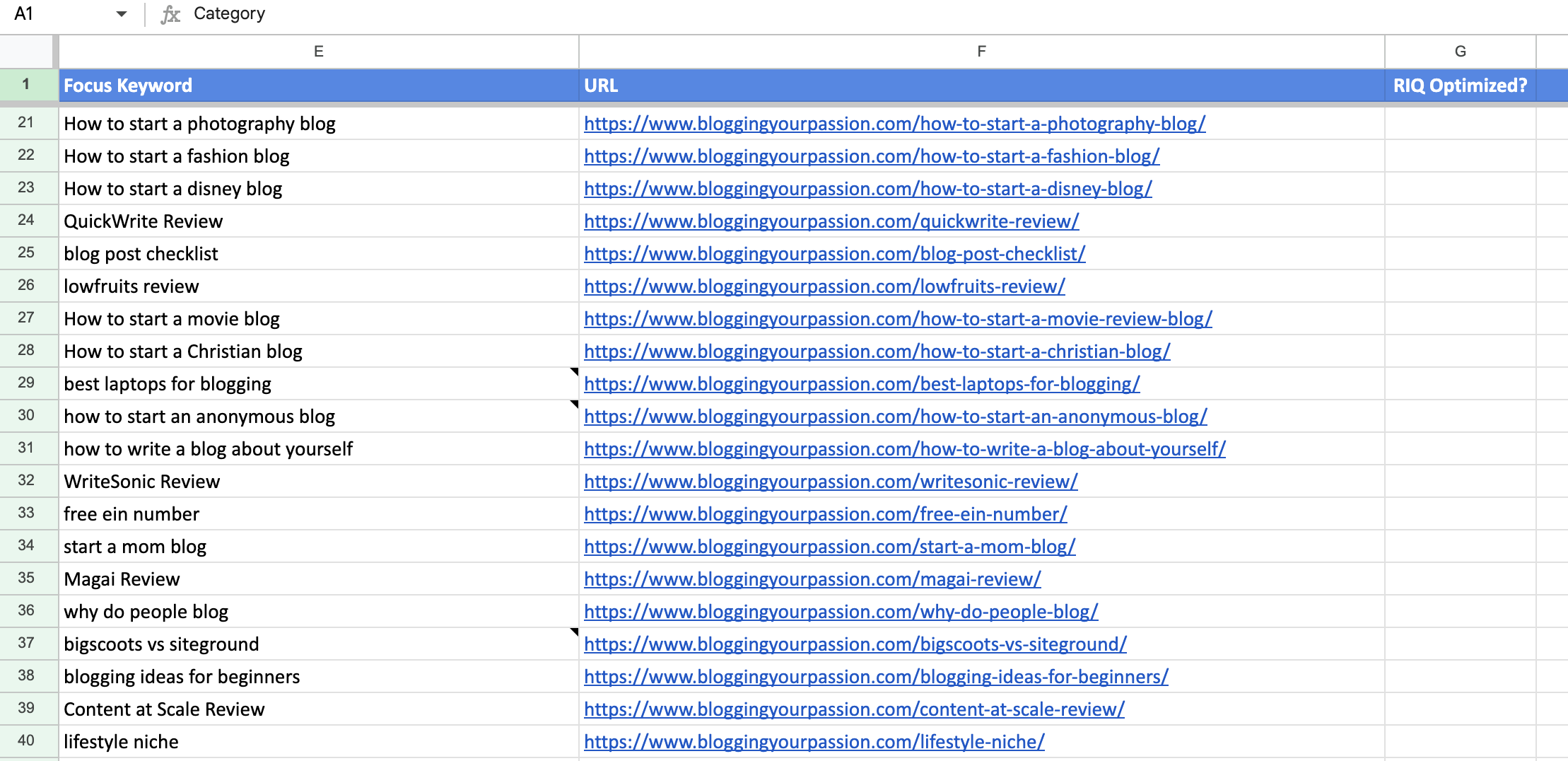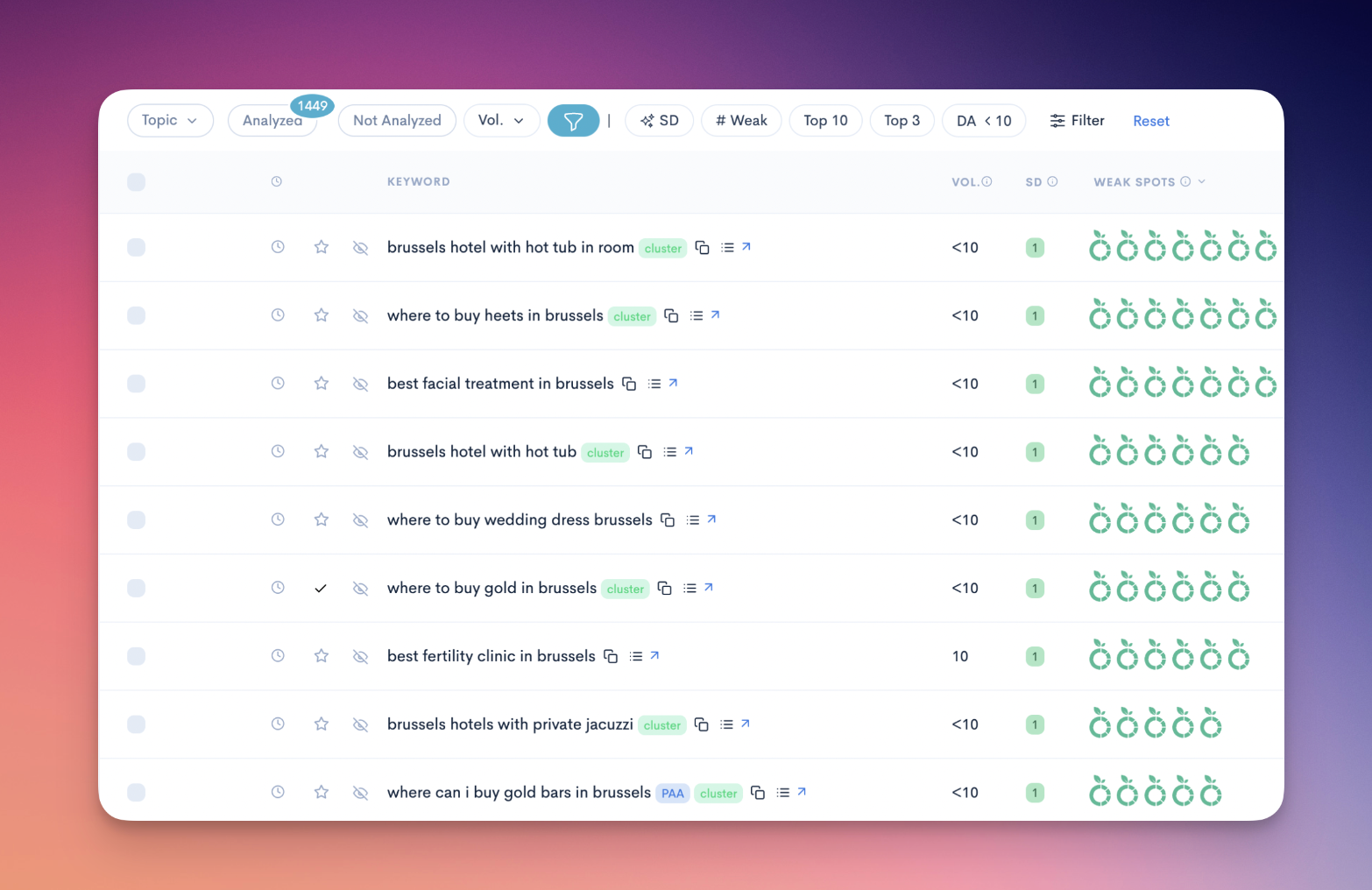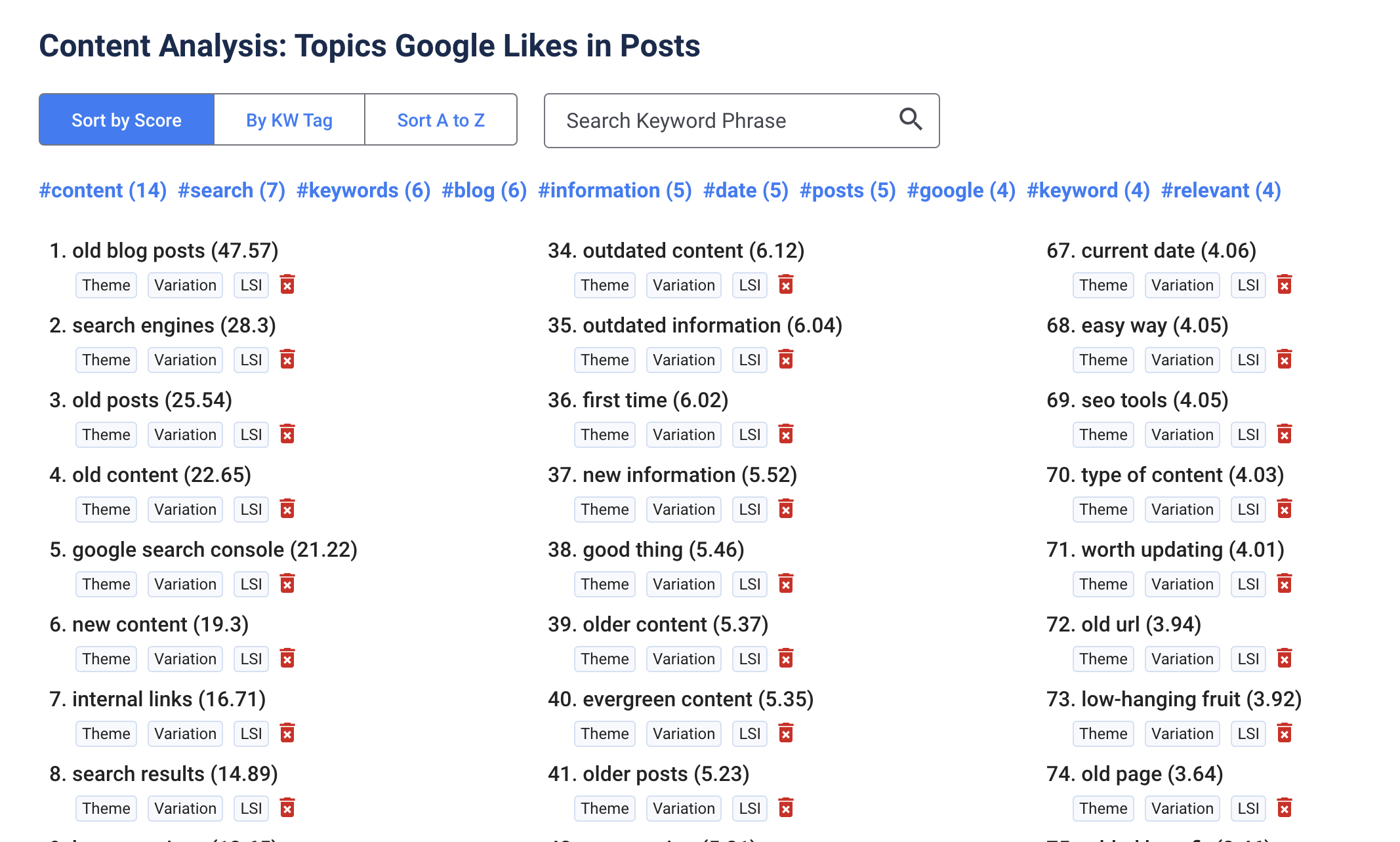How to Update Old Blog Posts for SEO (Republish Guide)

Are your old blog posts feeling a bit neglected?
Fear not, for there is a way to breathe new life into them and boost your website's SEO at the same time!
By updating your old blog posts, you can improve their visibility and attract more readers.
Whether you want to refresh the content or completely rewrite it, this guide will show you how to do it effectively.
Learn how to:
- Identify which blog posts need updating
- Conduct new keyword research
- Tighten up your ideas
You'll also discover the importance of:
- Improving visuals
- Updating internal and external links
- Enhancing the overall readability of your old blog posts.
Get ready to give your blog the SEO makeover it deserves!
Key Takeaways
- Updating old blog posts can improve search engine optimization and drive more traffic to your website.
- There are two approaches to updating old blog posts: content refresh and rewrite, depending on the goals and needs of the posts.
- Identifying and updating low-ranking or low-traffic posts, as well as fixing broken links and updating internal links, can help improve visibility and appeal.
- Conducting new keyword research and incorporating relevant keywords into the content can optimize old blog posts for SEO and improve rankings.
Table of Contents (click to expand)
- Reasons to Update Old Blog Posts
- Content Refresh Vs. Rewrite
- Identifying Blog Posts to Update
- Conducting New Keyword Research
- Rewriting Headlines and Meta Tags
- Updating Outdated Information and Statistics
- Tightening or Expanding Ideas
- Improving Visuals and Other Media
- Updating Internal and External Links
- Improving Readability of Old Blog Posts
- FAQs About Updating Old Blog Posts for SEO
- Conclusion
Reasons to Update Old Blog Posts
One reason to update your old blog posts is to improve their search engine optimization. By refreshing old content and ensuring that it's relevant and up-to-date, you can greatly improve your search rankings.
Outdated information can negatively impact your SEO, as search engines prioritize fresh and accurate content. By updating your old blog posts with new information and insights, you can create evergreen content that continues to attract readers and drive traffic to your website.
By providing an updated version of your old blog posts, you can show your audience that you're committed to delivering valuable and current content. This helps to establish your credibility and build a loyal following of readers who feel a sense of belonging to your blog community.
Content Refresh Vs. Rewrite
Refresh or rewrite? Should you write new content or focus on updating old content? Which approach should you take when updating your old blog posts for SEO?
It's a common dilemma faced by many content creators. When deciding whether to refresh or rewrite your old blog posts, consider the specific goals you want to achieve.
If your content is still relevant and valuable, a refresh can be a great option. This involves updating the information, adding new examples or statistics, and optimizing it for SEO with relevant keywords.
On the other hand, if your old blog posts are outdated or no longer serve their purpose, a rewrite might be necessary. This involves starting from scratch, reorganizing the content, and ensuring it meets current SEO best practices.
Ultimately, the decision to refresh or rewrite depends on the unique needs of your old blog posts and your SEO goals.
Identifying Blog Posts to Update

To effectively update your old blog posts for SEO, it's important to first identify which blog posts require updating. Start by reviewing your site's analytics and identify the blog posts that aren't ranking well in search engines or receiving low traffic.
These are the old posts that you should focus on improving. While you can look in Google Analytics, my favorite place to start with finding old blog posts to update is Google Search Console.
It's one of the best ways to find out which blog post might be ranking on the second page and can get one the first page with a little bit of updating.
Look for old content that may be outdated or no longer relevant. Updating this content will help improve its visibility and appeal to your audience.
Another aspect to consider is checking for broken links within your old posts. Fixing these broken links won't only enhance user experience but also improve your SEO.
Lastly, evaluate the internal links within your old posts and make sure they're still relevant and working properly.
Conducting New Keyword Research

To ensure the optimization of your old blog posts for SEO, it's essential to conduct new keyword research. By conducting keyword research, you can discover new keywords that are relevant to your old blogs and incorporate them into your content.
This will help you attract more organic traffic and improve your search engine rankings.
Start by analyzing your existing blog posts and identifying the keywords that are currently driving traffic.
Look for keywords with high search volume and low competition to maximize your chances of ranking higher in search results.
My two favorite keyword research tools are Low Fruits Keyword Tool and the RankIQ Software.
Rewriting Headlines and Meta Tags

To further optimize your old blog posts for SEO, it's important to regularly update and rewrite your headlines and meta tags.
Rewriting headlines and meta tags helps improve your search engine rankings and attract more readers to your content.
Start by reviewing your current headlines and meta descriptions to see if they accurately reflect the content of your blog posts.
Use relevant keywords in your titles and meta descriptions to make them more appealing to search engines.
Make sure your title tags are concise and descriptive, providing a clear preview of what your blog post is about.
Updating Outdated Information and Statistics
Update outdated information and statistics in your old blog posts to keep your content accurate and relevant. When readers come across outdated content, it can be frustrating and diminish their trust in your blog.
By updating the information and statistics, you show your commitment to providing up-to-date and reliable content.
Start by reviewing your older blog posts and identifying any outdated data or statistics. Look for information that may have changed over time or new developments that have occurred since the publish date.
Once you have identified the outdated content, replace it with the most current and accurate information available.
Remember to update the publish date to reflect the recent changes. By taking the time to update your older blog posts, you can maintain the credibility of your content and keep your readers engaged and informed.
Tightening or Expanding Ideas
Incorporate new insights and perspectives to refine your ideas and enhance the depth of your old blog posts.
When updating an old piece of content, it's crucial to not only update outdated information and statistics but also to tighten or expand your ideas.
Start by re-reading your existing content and identifying areas where you can provide more relevant information or expand on certain points.
Look for opportunities to add examples, case studies, or personal anecdotes to illustrate your ideas further.
On the flip side, consider tightening your ideas by removing any unnecessary fluff or repetitive information. By doing so, you'll make your content more concise and to the point, which can greatly enhance its readability and SEO value.
Improving Visuals and Other Media
Enhance the impact of your old blog posts by improving the visuals and other media.
Updating the visuals and other media in your blog posts is an effective way to give them a fresh and engaging look. Start by adding high-quality images, videos, or infographics that are relevant to your updated content.
This not only improves the overall aesthetics of your blog posts but also makes them more shareable and memorable.
Consider incorporating internal linking to other relevant blog posts or pages on your website. This not only helps to improve the user experience but also boosts your SEO efforts.
Updating Internal and External Links
Improving the linking structure is crucial for optimizing the SEO of your old blog posts. By updating internal and external links, you can enhance the user experience and increase your website's visibility in search engine rankings.
When updating your old blog content, take the time to review and revise the internal links within the post. Ensure that they're relevant, working properly, and directing users to valuable resources on your website.
Consider updating external links to reputable and authoritative sources. This not only adds credibility to your content but also improves your chances of receiving backlinks from those sources.
Improving Readability of Old Blog Posts
To make your old blog posts more reader-friendly, focus on enhancing the overall readability of the content. Here are some best practices to improve the user experience and boost search rankings with relevant content:
- Use subheadings to break up the text and make it easier to scan.
- Incorporate shorter paragraphs and sentences for better readability.
- Utilize bullet points and numbered lists to organize information.
- Include visual elements like images, infographics, and videos to engage readers.
- Use a conversational tone and write in a way that makes your audience feel included and understood.
By implementing these strategies, you can improve the readability of your old blog posts, making them more enjoyable for your readers.
FAQs About Updating Old Blog Posts for SEO
What are some of the benefits of updating my older blog posts?
Updating your older blog content is a great way to improve its relevance, help it rank better for keywords, and potentially attract more organic search traffic.
When you update posts with newer information and additional content, it shows search engines that the content is still relevant today.
Some key benefits include:
- Increased chance of ranking for your main keyword and related long-tail keywords
- Opportunity to optimize content for new search intent or target keywords
- Improved user experience with fresh content and updated date information
- Potential for more social media shares of an updated blog post
- Shows readers that your blog is actively maintained and trustworthy
How do I know if an old blog post is worth updating?
An old blog post is likely worth updating if:
- It ranks on the first page of Google results, indicating it has strong existing organic search traffic
- Your analytics show it gets a lot of traffic but high bounce rate, suggesting outdated content
- It contains broken links, inaccurate information or references that are now outdated
- There have been recent developments related to the topic that aren't reflected
- Readers often comment with questions or concerns indicating the content lacks key details
- It optimizes for keywords that have changed or don't reflect current search intent
What is the easiest way to update my old blog content for SEO?
The easiest way is to focus on posts that are already performing well. Identify these low-hanging fruit blog posts in your Google Analytics and add the following:
- An updated date both in the post text and the publication date
- A new introduction summarizing new developments related to the topic
- New sections with additional tips, step-by-step instructions, examples etc
- Links to 2-3 of your newer related blog posts
- Updated title tag and on-page SEO optimization for current target keywords
This refreshes the content without needing to rewrite the entire post.
How often should I plan to update old blog content?
Ideally, aim to update at least one old blog post every 1-2 months. This ensures your content stays relevant without getting too outdated. You can also create an editorial calendar and designate specific posts for regular updates 2-4 times per year, such as evergreen guides or seasonal content.
Conclusion
In conclusion, updating old blog posts for SEO is crucial for improving your website's visibility and driving more organic traffic.
By refreshing the content, conducting new keyword research, rewriting headlines and meta tags, improving visuals, and updating internal and external links, you can enhance the overall quality and relevance of your blog posts.
Improving the readability of old blog posts will make them more engaging and appealing to your audience. Take the time to update your old blog posts and reap the benefits of improved SEO.
